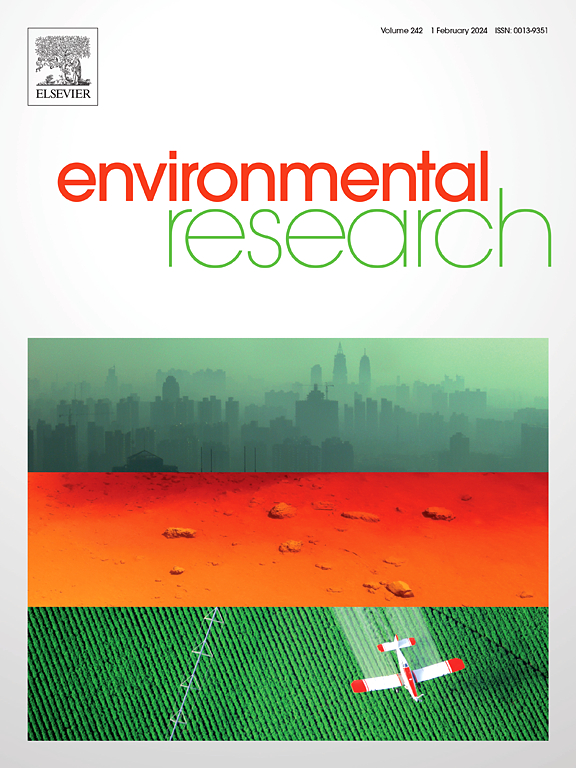增强SnO2/Pt-B-g-C3N4氧化去除2,4-二氯苯酚的能力
IF 7.7
2区 环境科学与生态学
Q1 ENVIRONMENTAL SCIENCES
引用次数: 0
摘要
异质结构类型和价带电位(VB)和导体带电位(CB)决定了光催化剂的氧化还原能力,其中增强氧化是苯酚降解的关键。为了提高催化剂的光催化氧化能力,在pt修饰的超薄b掺杂g-C3N4 (BCN)纳米片上生长了宽带隙SnO2,用于去除2,4-二氯苯酚(2,4- dcp)。采用两步热聚合法制备了掺杂b的g-C3N4纳米片。在B-g-C3N4纳米片上生长了小的Pt纳米颗粒,其中b掺杂导致Pt纳米颗粒均匀分布在2 ~ 3 nm。这些小Pt纳米粒子进一步支持溶剂热合成SnO2纳米粒子的沉积,这些纳米粒子的尺寸为4-7 nm,分布窄,形成了界面发育良好,组分分布均匀的SnO2/Pt/B-g-C3N4异质结构。SnO2的高正电荷VB促进了光生成孔的氧化。这些异质结构催化剂在70 mg/L的浓度下对2,4- dcp t的去除率为90.5%。在过硫酸盐(PDS)体系中进一步提高了2,4- dcp的去除率,最终2,4- dcp的去除率达到98%。SnO2良好的载流子转移能力和与Pt纳米颗粒形成的Z-scheme异质结构降低了光生载流子的复合。系统地讨论了2,4- dcp在PDS体系中的光催化机理和降解过程。SnO2组分中的氧空位加速了载流子转移,促进了污染物的降解。这些结果为提高催化剂的氧化还原能力和在低成本pds活化体系中的污染降解应用提供了一条可行的途径。本文章由计算机程序翻译,如有差异,请以英文原文为准。
Enhanced oxidation ability in SnO2/Pt-B-g-C3N4 towards 2,4-dichlorophenol removal
Heterostructure type and valence band (VB) and conductor band (CB) potential governs the redox ability of photocatalysts, in which enhanced oxidation is a key for phenol degradation. To increase the photocatalytic oxidation ability of catalysts, broad band gap SnO2 was grown on Pt-decorated superior thin B-doped g-C3N4 (BCN) nanosheets for 2,4-dichlorophenol (2,4-DCP) removal. B-doped g-C3N4 nanosheets were created by a two-step thermal polymerization. Small Pt nanoparticles were grown on B-g-C3N4 nanosheets, in which B-doping resulted in the homogeneous distribution of Pt nanoparticles of 2–3 nm. These small Pt nanoparticles further supported the deposition of SnO2 nanoparticles with small sizes of 4–7 nm and narrow distribution by solvothermal synthesis to create SnO2/Pt/B-g-C3N4 heterostructures with well-developed interface and homogeneous component distribution. The much positive VB of SnO2 improved the oxidation of photogenerated holes. These heterostructure catalysts revealed a 2,4-DCP t removal rate of 90.5 % at a concentration of 70 mg/L. The removal efficiency of 2,4-DCP was further increased in peroxydisulfate (PDS) system, and 2,4-DCP of 98 % was finally degraded. The well charge carrier transfer ability of SnO2 and Z-scheme heterostructure formation with fine Pt nanoparticles decreased the photogenerated charge carrier recombination. The photocatalytic mechanism and degradation procedure of 2,4-DCP in PDS system were systemically discussed. The oxygen vacancies in SnO2 components allow accelerated charge carrier transfer and promote the degradation of the pollutants. These results supply a utilizable way for improving the redox ability of catalysts and the application in pollution degradation in low-cost PDS-activated systems.
求助全文
通过发布文献求助,成功后即可免费获取论文全文。
去求助
来源期刊

Environmental Research
环境科学-公共卫生、环境卫生与职业卫生
CiteScore
12.60
自引率
8.40%
发文量
2480
审稿时长
4.7 months
期刊介绍:
The Environmental Research journal presents a broad range of interdisciplinary research, focused on addressing worldwide environmental concerns and featuring innovative findings. Our publication strives to explore relevant anthropogenic issues across various environmental sectors, showcasing practical applications in real-life settings.
 求助内容:
求助内容: 应助结果提醒方式:
应助结果提醒方式:


